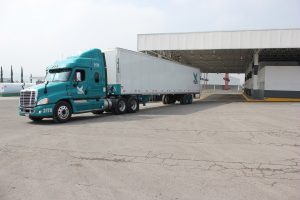Whether you are a brand new truck driver or a well-experienced one, you are likely familiar with transportation weigh stations. These off road areas are found all over the American highway system and play a very important role in keeping roads safe for all vehicle drivers. Whether you’re a trucking professional or are just curious about the stations you see scattered across American highways, here’s what happens at transportation weigh stations.
Who Needs to Stop at a Transportation Weigh Station?
If you are driving a small car, pick-up truck, or even some smaller RVs, you likely will never need to stop at a transportation weigh station. This is because the only vehicles that are required to stop at weigh stations are vehicles weighing over 10,000 pounds. The legal weight limit of road transportation vehicles is 80,000 pounds since this is around the maximum weight that asphalt roads and concrete bridges can handle before beginning to crack or weaken. However, the weight limits vary depending on the type of road or terrain. Essentially, all you’ll have to do is briefly park your truck on a large industrial scale, and a security officer will make sure that your truck isn’t exceeding the weight limit for the particular road ahead. If there is a problem, or the officer suspects anything wrong with the truck, such as a flat tire, strange leaks, or brake issues, they might ask you to pull over for further inspection.
Weigh Station Technology Examples
Over the years, transportation weigh stations have become increasingly equipped with high-powered technology to increase their effectiveness. Some examples of new technology many of these weigh stations feature are thermal imaging, vehicle waveform identification, and lane control technology. Thermal imaging is likely what an inspection officer will use when looking for potential hazards with the truck itself aside from weight. Thermal imaging is able to pick up on any hazards like low tires or even engine issues from the places heat concentrates to. Vehicle waveform identification essentially forms an “ID” for a heavier truck. The point of it is to ensure that the truck driver is not violating any weight lane requirements while driving, and this can be reviewed at the next weighing station. Lastly, there is lane control technology, which helps make stopping at a transportation weighing station much more efficient for all truck drivers by sorting the truckers into lanes properly for better line control.
Transportation Law Enforcement
A truck driver will likely not have to deal with law enforcement unless there is a problem with the weight of the truck or the truck itself. But it’s important to remember that their job is very important in keeping people safe on the roads.
For All Your Trucking Needs
Follow us here at Evan Transportation to get more updates on driving tips and the trucking industry. Evan Transportation provides trucking and transportation services for clients throughout the Mid-Atlantic region. All of our drivers and staff are offered competitive salaries, benefits, and are guaranteed to be home every day. Interested in finding out more? Visit us online or give us a call at 443-673-3365. For even more information, visit us on Facebook,Twitter, Pinterest, and LinkedIn.

